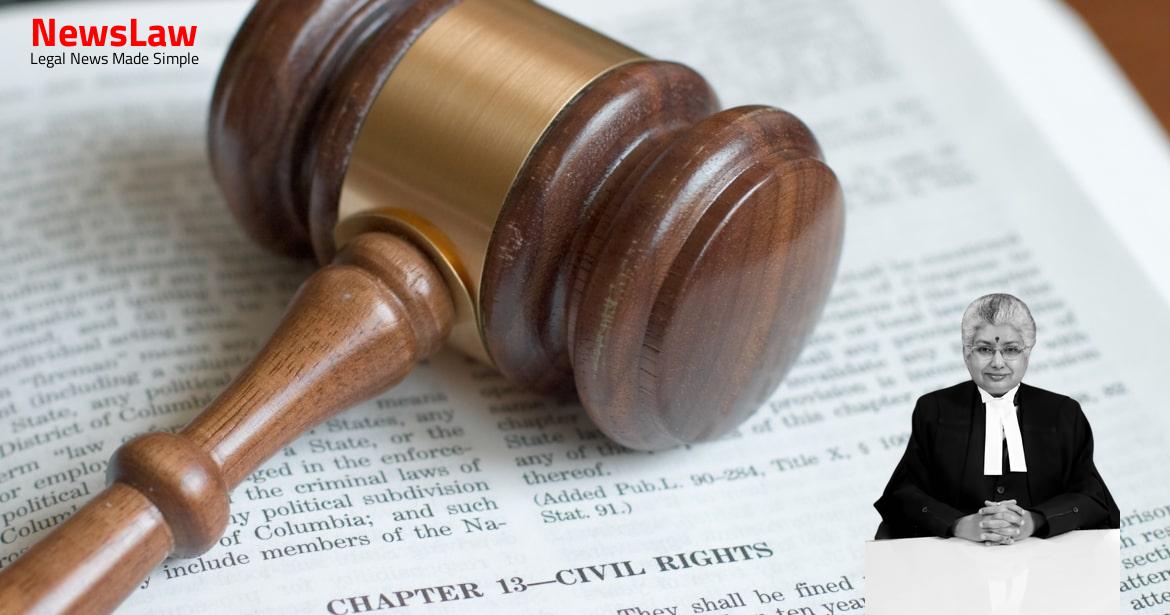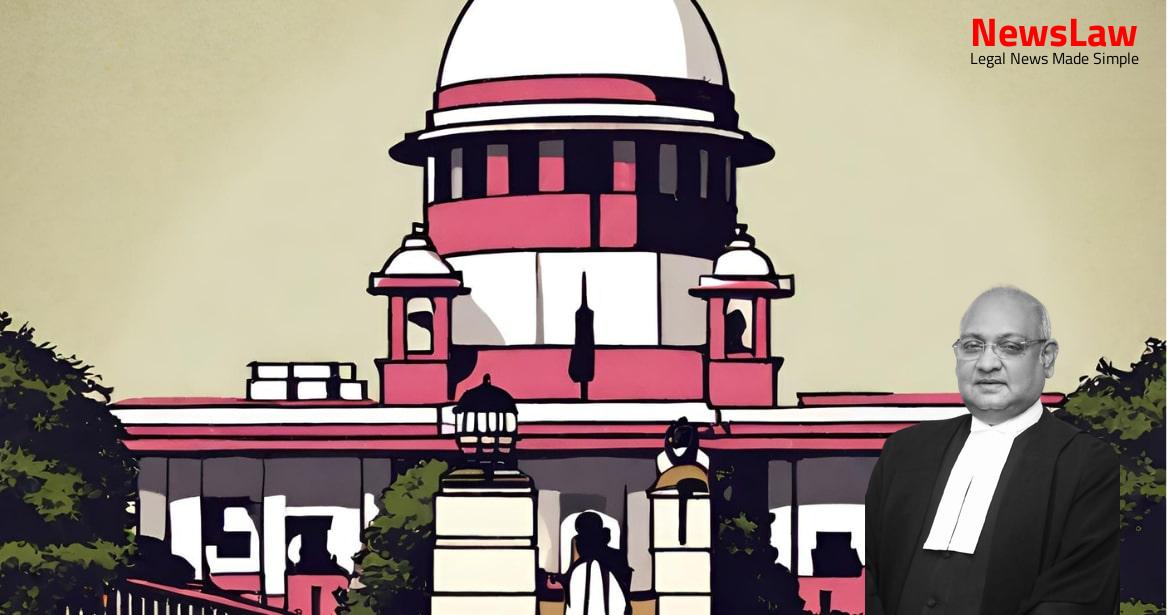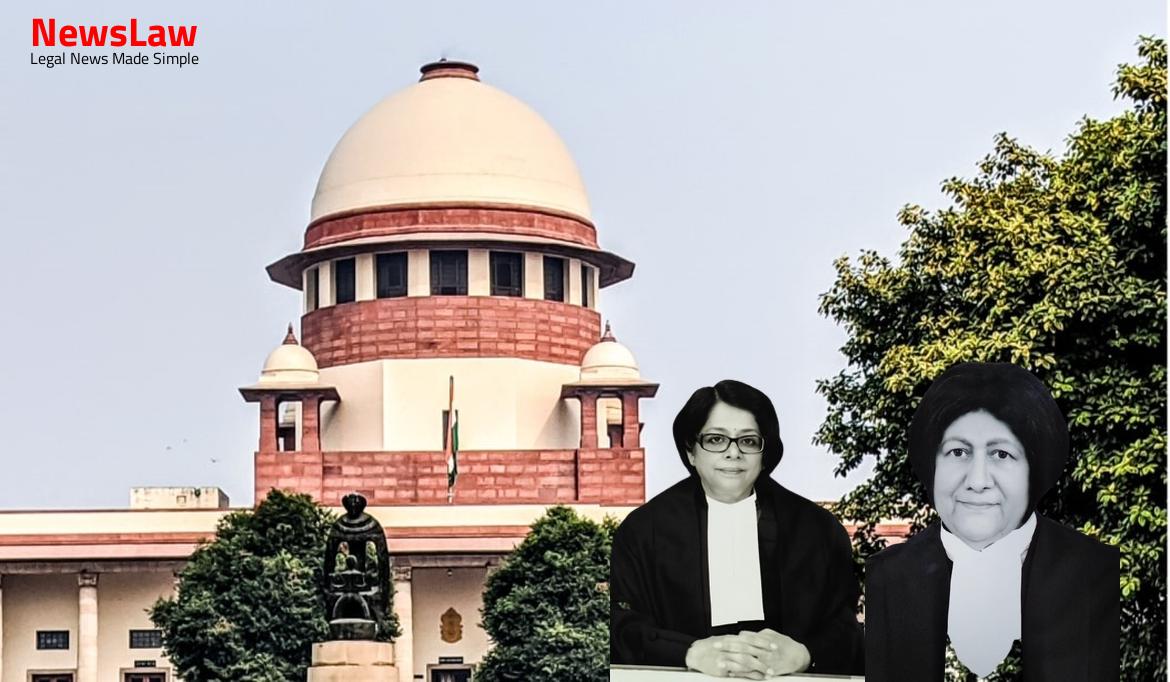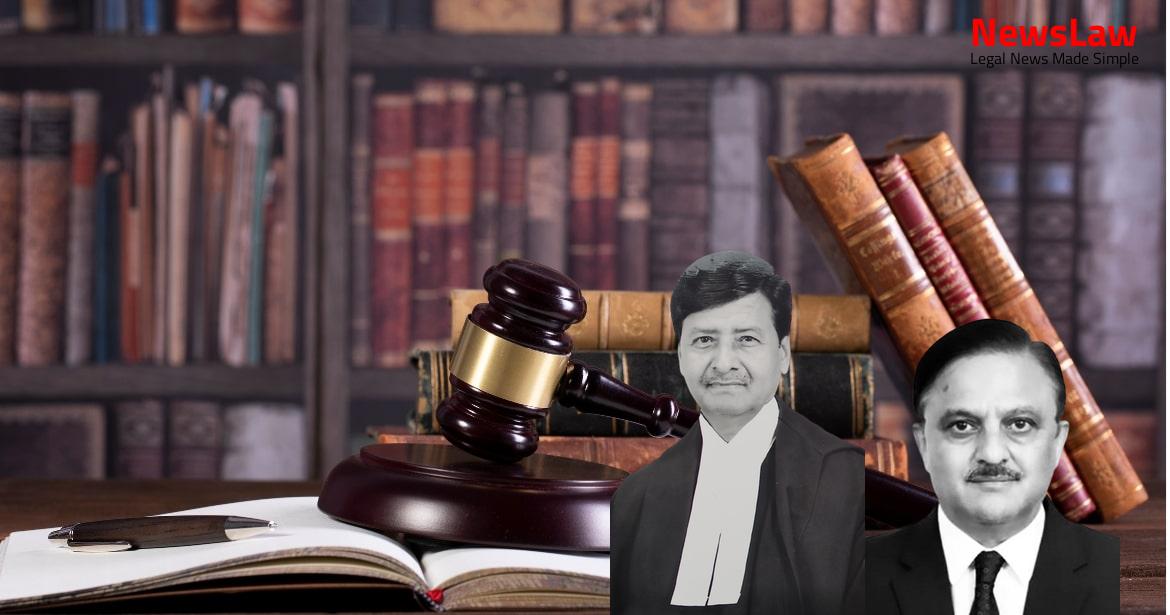Delve into the intricacies of the legal system as the court provides profound analysis on the interpretation of GST laws. The case highlights the significance of Section 54(3) and Rule 89(5) in refund scenarios, focusing on input goods and services. Discover the court’s stance on the constitutional validity of these rules, reflecting the challenges and debates surrounding the application of tax laws in complex economic scenarios.
Facts
- Net ITC is a term used in the formula mentioned
- The expression ‘Net ITC’ is defined in Rule 89(5) as input tax credit availed on inputs
- The Gujarat High Court directed the Union Government to allow the claim for refund made by petitioners, considering unutilised ITC on input services as part of ‘Net ITC’ for calculating refund in accordance with Rule 89(5) and Section 54(3).
- The Madras High Court, in a separate judgment, disagreed with the Gujarat High Court’s view and declined to follow it.
- The writ petitions challenging the validity of Rule 89(5) as ultra vires Section 54(3)(ii) were dismissed.
Also Read: Electoral Malpractices in Mayor Election
Arguments
- Mr. Venkataraman argued that Goods and services are distinct at a constitutional level.
- The doctrines emphasized by Counsel provide the rationale for the law but cannot be a basis for judicial review unless it violates constitutional parameters.
- Parliament had to balance the interests of the States while implementing the GST regime.
- Section 54(3)(ii) and Rule 89(5) are discussed in the context of refund of input goods versus input services.
- The powers under Section 164 are not restricted to specific sections for rule-making.
- Challenges to the formula in Rule 89(5) in relation to Section 54(3) are presented by various Counsel.
- Arguments revolve around the interpretation of ‘Net ITC’ and the formula’s impact on taxpayers.
- Debates on constitutional validity, classification, and the need for rules to carry out provisions of the Act.
- Different interpretations of Section 54(3) and Rule 89(5) are discussed in detail.
- The interplay between statutory provisions, rules, and the doctrine of equivalence is analyzed.
- Various Counsel present alternative submissions and challenge the formula in Rule 89(5).
- Respondents are in the business of providing dyeing and printing services for textile industries.
- ASG relies on the RK Garg v. Union of India decision where economic legislation is viewed as empirical and not based on abstract symmetry.
- Inverted duty structure exists where the rate on inward supplies is higher than outward supplies.
- Interpretation of Section 54(3) first proviso (ii) leading to disallowance of credit on input services is impermissible as it goes against the aim of harmonizing goods and services and removing tax cascading effects.
- Input goods and services procured by respondents for job work operations have higher GST rates compared to the 5% rate applicable on outward supplies.
Also Read: Balancing Power and Transparency: Electoral Bonds Struck Down, Disclosure Mandated
Analysis
- Section 16 of the CGST Act allows registered persons to take credit of input tax charged on goods and services used in their business, subject to conditions and restrictions.
- Section 54 provides for a refund of tax, with specific provisions for refunding unutilised input tax credit in cases of zero-rated supplies and an inverted duty structure.
- Provisos in Section 54(3) are interpreted as restrictions rather than qualifications, limiting the refund of unutilised ITC to specific scenarios.
- Rule 89 in the CGST Rules provides a formula for refund in cases of an inverted duty structure.
- The distinction between input goods and input services is important in determining ITC eligibility, as set out in Section 17 and related rules.
- The provisions of Section 16 and Section 49 dictate the use of electronic ledgers for making tax payments and refunds.
- The interpretation of Section 54(3) involves understanding the limitations on refunding unutilised ITC in different scenarios.
- The Constitution and relevant articles empower the imposition and refund of taxes on goods and services under the CGST Act.
- Selecting the objects to be taxed, determining the quantum of tax, legislating for the conditions for the levy and the socio-economic goals which a tax must achieve are matters of legislative policy.
- In the case of Lakshmi Machine Works , a schematic interpretation was adopted to give effect to the intent of the legislature, especially regarding the inclusion of sales tax or excise duty in the definition of total turnover.
- The Gujarat High Court held that the delegate of the legislature had acted contrary to the provisions of the CGST Act in prescribing a formula to execute refund of unutilized ITC accumulated on account of input services.
- The One Hundred and First Amendment to the Constitution aimed at introducing a goods and services tax to remove the cascading effect of taxes and provide for a common national market for goods and services.
- The Court emphasized the need for preserving harmony between the States and the Union in a federal arrangement while implementing a common tax event like the GST.
- The economic rationale behind the enactment of service tax was based on the equivalence between goods and services, considered as instruments for satisfying human needs.
- The Court’s interpretation in various tax-related cases emphasized principles like the doctrine of equivalence, strict construction of exemptions, and the legislative choice regarding refund provisions.
- The Court noted that VAT is a consumption tax borne by the consumer, and the levy of taxes should not lead to unjust enrichment of the taxpayer.
- Justice P N Bhagwati emphasized the rationale for giving greater latitude to laws concerning economic activities compared to laws related to civil rights.
Also Read: Recall of Resolution Plan Approval: Legal Analysis
Decision
- The Madras High Court’s view is affirmed, and the Gujarat High Court’s view is disapproved.
- The appeals challenging the Madras High Court’s verdict are dismissed while the appeals against the Gujarat High Court’s judgment by the Union of India are allowed.
- No order is given as to costs.
- Observations in paragraphs 104 to 111 are to be considered by the GST Council.
- Pending applications, if any, are disposed of.
- The Union of India’s appeals against the Gujarat High Court judgment dated 4 July 2020 are allowed, setting aside the judgment.
- The assessees’ appeals against the Madras High Court judgment in Tvl. Transtonnelstroy Afcons Joint Venture and connected cases dated 21 September 2020 are dismissed.
- Consequently, the writ petition filed by the assessees is also dismissed.
Case Title: UNION OF INDIA Vs. VKC FOOTSTEPS INDIA PVT. LTD. (2021 INSC 469)
Case Number: C.A. No.-004810-004810 / 2021



